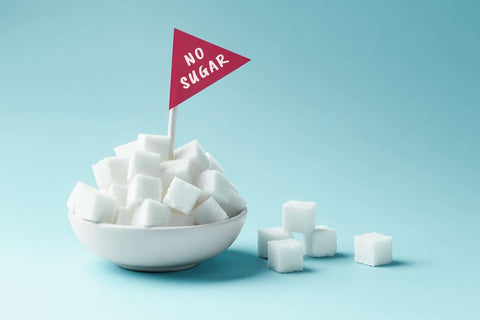Ce face din Spirulina un superaliment?
Spirulina este unul dintre cele mai renumite superalimente, plin de nutrienți esențiali care susțin sănătatea generală. Cunoscută pentru gama sa impresionantă de vitamine, minerale și antioxidanți, spirulina ajută la stimularea funcțiilor organismului, la îmbunătățirea sănătății fizice și mentale și la reducerea riscului de boli cronice.
Spirulina: O sursă de nutrienți
Spirulina este un tip de algă verde-albastră incredibil de bogată în proteine, antioxidanți și vitamine. De asemenea, conține o mulțime de minerale esențiale precum fier, magneziu, calciu și potasiu. Pentru cei care urmează un stil de viață bazat pe plante, spirulina este o sursă superioară de proteine, oferind de 12 ori mai multe proteine decât carnea de vită. Conținutul său de proteine joacă un rol esențial în furnizarea de beneficii antioxidante și în susținerea unui metabolism sănătos, în special în ceea ce privește grăsimile și carbohidrații.
Spirulina este, de asemenea, o sursă de top de acid gama-linolenic (GLA), un acid gras benefic care susține sănătatea creierului, funcția inimii și bunăstarea generală.
De ce ar trebui să adăugați Spirulina la dieta dumneavoastră
Cu o singură porție, spirulina oferă o doză impresionantă de vitamine și minerale, echivalentă cu mai multe porții de fructe și legume. Dincolo de beneficiile sale nutriționale, spirulina poate fi utilizată în gătit și în tratamentele de înfrumusețare. Aceste alge bogate în nutrienți câștigă atenția la nivel mondial pentru potențialul lor de a combate malnutriția și foametea, deoarece se pot dezvolta la temperaturi extreme fără a avea nevoie de prea multe culturi.
Beneficiile Spirulinei pentru sănătate
- Stimulează imunitatea: Bogată în vitamina C, spirulina ajută la întărirea sistemului imunitar.
- Îmbunătățește digestia: Susține un metabolism sănătos și îmbunătățește flora intestinală.
- Susține sănătatea ficatului: Ajută la reducerea acumulării de grăsimi în ficat.
- Promovează sănătatea inimii: Contribuie la bunăstarea cardiovasculară.
- Reglează tensiunea arterială: Ajută la menținerea unor niveluri sănătoase ale tensiunii arteriale.
- Crește rezistența fizică: Îmbunătățește energia și rezistența.
- Antiinflamator: Spirulina are proprietăți antiinflamatorii puternice.
Cum să încorporați spirulina în mesele dvs.
- Adăugați la smoothie-uri pentru un plus de nutrienți
- Se amestecă în deserturi și gustări pentru beneficii suplimentare pentru sănătate
- Se amestecă în omlete, mâncăruri pe bază de plante și clătite
- Se amestecă în humus sau piureuri tartinabile
- Se presară peste mâncărurile cu paste
- Utilizați în sosurile pentru salate pentru un plus de aromă și nutrienți
- Adăugați la supe pentru o îmbogățire verde
- Creați alternative sănătoase la înghețată
- Se savurează în biscuiți de casă și batoane energizante
Idei de rețete Spirulina
Smoothie verde
Ingrediente:
- Apă de nucă de cocos
- O mână de spanac
- ¼ castravete
- 1 kiwi mediu
- Un vârf de cuțit de ghimbir pudră
- Sucul de la 1 lămâie
- 1 linguriță pulbere de spirulină
- ½ avocado
- ½ banană
Instrucțiuni:
Amestecați toate ingredientele pentru un smoothie răcoritor și energizant.
Pesto verde parfumat
Ingrediente:
- 1 cană de frunze proaspete de busuioc
- 50 g migdale feliate
- 3 căței de usturoi
- 50 g tofu sau cremă de brânză
- Ulei de măsline
- Sare
- 1 linguriță pulbere de spirulină
Instrucțiuni:
Amestecați toate ingredientele într-un robot de bucătărie până la omogenizare. Savurați cu paste, ca dip sau pe pâine prăjită!
Spirulina este o modalitate ușoară și versatilă de a vă îmbunătăți dieta cu nutrienți naturali. Fie că o adăugați la mâncărurile dvs. preferate sau o folosiți pentru beneficiile sale de wellness, acest superaliment vă va susține cu siguranță sănătatea din interior spre exterior!







